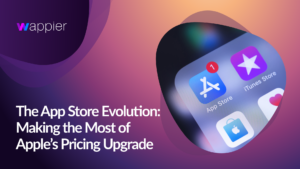Nailing the details of localization is vital for any developer who wants their game to be a global hit.
A video game needs a global release to reach its largest potential audience, but it should be localized first to make the best impression on that audience. The video game localization process adapts a video game developed for one region for use in another. The best localizations are a comprehensive network of thoughtful changes based on a target region’s linguistic and cultural expectations, but not every developer can — or should — go to those lengths. Here’s what you need to consider before you localize your game.
Elements of the Video Game Localization Process
Language
The most obvious step in the video game localization process is translating the game’s dialog or instructions into the new region’s dominant language. Changing the language is just the starting point, however, as a direct translation will rarely sound natural to a native speaker. Every language has its own idioms, taboos, and other idiosyncrasies that require nuanced understanding to avoid language gaffes. Consider the English word “text,” which can be a noun meaning both a reference book (“a page from an ancient text”) and printed words (“the text on the screen pulsed”), or a verb referring to sending a message via mobile phone (“text me the directions”).
The names of in-game characters, items, and locations also need to be changed to suit the cultural norms of the target region. A seedy collection of rooms for rent might be a motel run by Sarah in the US but a hostel managed by Solveig in Norway.
Assuming your game was developed in English, begin your translation efforts by focusing on the FIGS: French, Italian, German, and European Spanish. In combination with English, those languages cover 7 of the top 10 gaming markets in the world, leaving out only China, Japan, and South Korea. (comment)
Games with voicework have two options when it comes to localization: dub the region’s language over the game, or keep the original audio and add subtitles. Budget and time constraints will often make the decision for you, but even assuming you have free rein to do whichever you prefer, it’s not a clear-cut choice. China, for example, favors original audio with subtitles, with the mainland preferring Simplified Chinese for its subtitles and Hong Kong opting for Traditional Chinese.
Once that’s done, you have to do it all again for your app’s product and support documentation.
Culture
To understand the importance of video game localization of a region’s culture, all you have to do is give a thumb’s up. In most countries, people will greet you with a smile, but you’ll be considered rude in the Middle East, where the gesture is the equivalent of flipping someone off. Cultural attitudes about money, sex, violence, drug use, alcohol, and religion vary wildly around the world.
Localization examines every aspect of a game, from character models to plot points for anything that might be inappropriate within the target region. American players likely won’t balk at a character taking a pill to cure an in-game ailment, but other countries are less tolerant of any depiction of drugs — even fictional ones. Beyond that, developers have to consider the content and censorship practices of the region. Prior to 2018, for example, developers of games featuring Nazis had to change their art assets to remove swastikas if they wanted to launch in Germany.
Internalization
A hidden aspect of video game localization is internalization, which makes the game’s infrastructure adaptable to any region, regardless of language. Without this step, a developer might discover their app’s source code doesn’t work because the text characters aren’t encoded properly. Internalization also addresses UI details like date and time conventions and name display. For example, if you can’t adapt your game to work with text reading right to left, don’t bother trying to localize it into Arabic. These small points are overlooked by the player when they’re working as intended, but become glaring errors when they don’t.
You may also want to consider changing your App Store badges to better reflect the new region. Assuming everything works correctly, you can begin QA testing and proofreading.
Monetization
Perhaps the most difficult aspect of localizing a game is monetization, because it encompasses language, culture, and UI. A user has to understand the instructions for making in-app purchases, the reward has to be appropriate for the culture, and the presentation needs to look as polished as the rest of the game.
Assuming you properly localized the monetization mechanics, the question of the value proposed by the purchase remains. In Ireland, for example, a standard subscription costing $15.94 will give you access to the largest Netflix library in the world: 6379 titles. That’s the price of a standard subscription in Austria, too, despite Netflix only hosting 4515 titles there. Netflix has the capacity to gather enough data about per capita income and exchange rates to make informed choices about adjusting subscription rates to keep its value proposition relatively equal everywhere in the world. Most developers aren’t big enough to do the same and simply price their games for their largest market — in most cases the United States — and then let the App Stores adjust pricing for different countries according to just exchange rates..
The reality is that they are missing a huge revenue maximization opportunity by not pricing to local market demand. Wappier takes the pain out of localizing your game’s in-app purchase (IAP) pricing for individual countries. Our Predictive Econometric Models analyze macroeconomic, microeconomic, device and game statistics data in order to derive a Country Pricing Index. This combined with a multi-variate testing framework enables wappier to optimize IAP pricing on a per country basis across 1000s of price SKUs automatically. And we do it all without an SDK.
To learn more about how wappier’s Global Pricing solution can help you maximize global gaming revenues, please contact us here.






